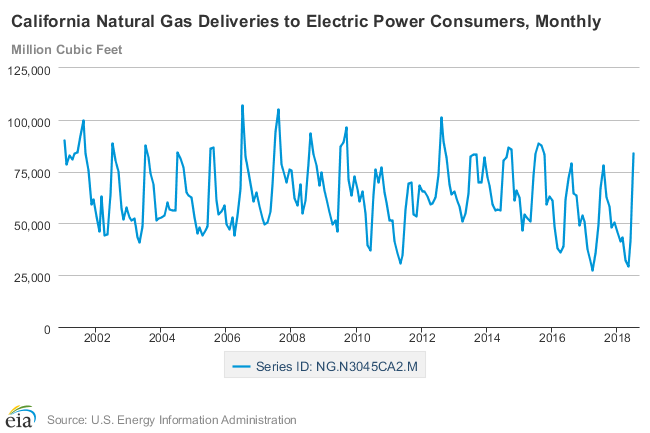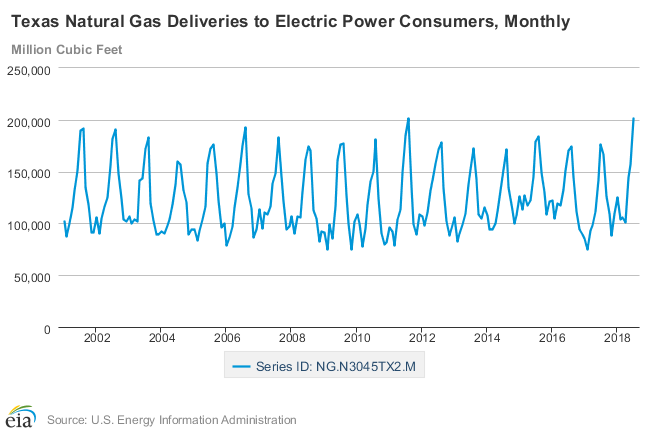Power generation has traditionally been an open market. However, looking back at the scale and costs that existed in the past …
Nuclear and coal often prevailed because they generated electricity at a lower cost. Traditional models also depended heavily on transmission systems requiring large centralized generators to move power. The Power market is evolving faster than anyone could have imagined. Until recently natural gas was thought to be the gold standard. It had the ability to provide steady baseload and reliable peak load power that was inexpensive and cleaner than coal while renewable resources were still just outside the line of sight.
Now it appears, with the influx of renewables and energy storage, utilities see how energy storage resources can supplement and, in some cases, completely replace gas-fired generation.
Influxes in renewable energy sources are fundamentally changing how we generate and distribute power.
Renewable resources are generated at costs less than or equal to conventional generation, allowing them to reach grid parity and trigger change within traditional utility business models.
Globally, renewable energy continues to emerge strongly, allowing new entrants to compete against larger, established electric utilities.
Gas-fired generation has been called a bridge to a renewable future, but the length of the bridge depends on where the bridge is.
Integrating energy storage with new and existing gas plants can dramatically improve their speed and flexibility, resulting in improved efficiencies and lower emissions. And the integration of storage allows gas generators to be turned down immediately without impacting reliability, as well as enabling them to operate at optimal efficiency.
For example, a hybrid solution has been applied to two existing GE LM6000 peaker Units at Southern California Edison’s (SCE) Norwalk site and a Rancho Cucamonga site using Hybrid Electric Gas turbines (EGT®) developed by Wellhead Electric and General Electric.
The advantages are, a) reliable stand-alone energy storage without burning gas, and b) the ability to immediately produce power during grid emergencies. Over time, the modular energy storage capacity can be augmented, optimizing existing grid interconnection capacity, eventually the underlying gas generator would only be used as an emergency backup resource.
California generally drives national energy trends.
In 2013, it was the first state to put an energy storage mandate in place. In May 2018 it became the first state to require all new homes to come equipped with solar panels.
Today, any new investments in renewable energy may yield a profit or they may hit roadblocks because of grid reliability, interconnection delays or unanticipated fees from the utility. As states move toward performance-based rates, these roadblocks will be considerably reduced and options for selling the power from new renewable investment will be increased.
The U.S. is a patchwork of diverse electricity market structures.
The traditional, vertically-integrated model exists largely in the southern, central and northwestern regions of the U.S., while 23 states and the District of Columbia have enacted some form of competition in generation, energy retailing, or both. While the traditional business model emphasizes the cost of electricity purchased from the market and the cost of service, the next evolution appearing in the U.S. is performance-based rates.
Who decides which power plants to build?
In many states, power generation, deregulation was supposed to answer that question by creating a wholesale market. Instead of utility boards and state commissions deciding what to build, it was believed the forces of supply and demand for electricity would dictate which plants to build and which to retire.
This idea was the driving force behind the advent of wholesale power markets, which serve approximately two-thirds of the U.S. population. However, increasingly, states want the benefits of electricity markets but also want to dictate their outcomes. The way in which federal regulators strike a balance will influence the power mix for decades to come.
Many restructured states have enacted renewable energy mandates to supplement the power sited through wholesale markets. The state is also a place where gas-fired generation is struggling, getting pushed out of the market by low-cost wind, solar and hydro power. Renewable penetration in California is high because of the state’s aggressive environmental policies, but as more states turn toward fossil fuel alternatives, could gas-fired generation’s fate in California echo throughout the country?
States are dissatisfied with the outcomes of deregulated markets and are enacting subsidies and mandates to help determine the generation mix within their borders. Renewable energy mandates and nuclear plant subsidies are prime examples. The result is a prolonged debate over how interstate electricity markets can accommodate state policy preferences, or whether states should reassert fuller control over their resource decisions.
This debate is now coming to the Federal Energy Regulatory Commission (FERC) in a case concerning how to treat subsidies in the nation’s largest wholesale power market — the PJM Interconnection. Its outcome could determine not only what plants are built today, but how the U.S. power market evolves in future. How FERC weighs state power preferences against market functions will determine the future of wholesale market and could set a precedent for how FERC will deal with similar issues in other regions.
Tension between market forces and desired outcomes has been exacerbated in the last decade by the evolving costs of power generation resources in the U.S.
Whereas large coal and nuclear plants previously set the marginal cost of electricity in wholesale markets; declining renewable energy costs and historically low natural gas prices now set the marginal cost of electricity.
Today, natural gas plants typically set the prices in wholesale markets and are increasingly pushing more expensive plants offline. In 2005 coal constituted more than 50% of the U.S. generation supply, but has since dropped to 27% in the first half of 2018.
Nuclear plants, which cannot ramp up and down to vary their output, are similarly affected by the shift to gas and renewables. Six nuclear plants have retired in the last five years, and twelve more, totaling 12 GW, are slated to retire by the early 2020s.
In the short to intermediate term, there could even be an increased reliance on gas-fired generation as coal and nuclear power plants continue to retire. But as more renewable and distributed generation enter the market, there is a good chance the role of gas could shift from baseload to quasi-baseload. If, however, energy efficiency and demand response continue to erode demand, and renewable generation continues to grow, then the last combined cycle plant may be built in next 10 years. It is nearly impossible to build a combined cycle plant in California and the rest of the country could very well follow suit.
The challenges California’s gas-fired generators are facing was highlighted in Pacific Gas & Electric’s recent proposal to the state’s Public Utilities Commission (CPUC) to replace three gas-fired plants with 569 MW/2,270 MWh of energy storage.
Many of the existing gas plants in California, like Calpine’s Metcalf plant in San Jose, are the latest state of the art gas-fired combined cycle plants. If these plants can’t compete in the market, they will become obsolete, which is what’s happening to nuclear and coal in California and elsewhere.

Peak delivery of natural gas to electric customers has gone down in California.
Credit: U.S. Energy Information Administration
Interestingly, California’s wholesale energy prices are low because no-fuel cost renewable generation resources don’t bid directly into the California ISO’s day-ahead energy market. They sign long-term offtake contracts with utilities, which then schedule that capacity into the ISO, presumably at prices low enough to ensure the resources are dispatched. The actual price the renewable resources are paid is stipulated in the confidential contracts with utilities.
The prospect of a large portion of California’s gas-fired generation fleet being forced into retirement has raised alarms. The fact that some utilities are having trouble meeting their RA (Resource Adequacy) obligations while generators like NRG are closing plants because they cannot earn sufficient revenues in the market points to a problem, PUC Commissioner Liane Randolph wrote in an opinion article for Utility Dive.
While gas capacity is facing challenges in California, in many other markets, gas-fired generation has overtaken coal-fired generation as the dominant generation source. And its role is only expected to grow except for the Electric Reliability Council of Texas (ERCOT) where wind power can often set the clearing price. ERCOT does not have a capacity market because it is uniquely an energy-only market.
Energy prices rise, and fall based on supply and demand with price cap at $9,000/MWh. Other states are reluctant to have such faith in the market and as such implemented capacity markets. Unlike California, Texas has several coal, nuclear, and gas plants along with highest concentration of wind power in the nation.
Wind may sometimes dominate the ERCOT market, but gas-fired generation and coal still play an important role in Texas. In 2017, gas-fired generation supplied nearly 39% of ERCOT’s power, compared with 32% from coal and nearly 17.5% from wind. In terms of capacity, natural gas generation comprises 53% of the mix and wind 22%. Texas natural gas consumption far exceeds California’s.

Credit: U.S. Energy Information Administration
In the Eastern region, the concept that gas capacity could be a bridge to a renewable future has more credence because renewable penetration is not as high, but the lessons from California are still instructive. There are marked differences between the power markets in PJM, California, and Texas.
PJM has a capacity market, showcasing the effects low-cost natural gas can have on power markets. Much of PJM sits on Marcellus and Utica shale formations that yield low-cost gas from hydraulic fracturing. Developers continue to bid new projects into PJM’s capacity market even though the RTO has a reserve margin at 15.8%, far higher than its mandated minimum. In its most recent capacity auction, PJM procured enough capacity for a 21.5% reserve margin. Gas-fired combined-cycle generation comprises about 50% of PJM’s interconnection queue.
Some estimates suggest that there are about 15 GW of combined-cycle capacity under construction in PJM with another twenty two GW of new gas capacity in development.
For combined cycle capacity the threat is not from coal plants, but more from wind power. Wind might force gas capacity into retirement in some markets, but not until the cost of energy storage drops low enough to allow wind to push out gas. In other words, gas generation in PJM, NEISO, and parts of NY will remain a key resource. As more renewables enter the market, they create a need for reliable flexibility which only gas generation can provide, not coal or nuclear power.
The Institute for Energy Economics and Financial Analysis (IEEFA) estimates 15.4 GW of coal-fired capacity will close in 2018, including forty-four units at twenty-two plants. IEEFA estimates another 21.4GW of coal-fired capacity would close over the next six years.
Coal plants are becoming less competitive because of declining cost of renewables and natural gas prices that are forecast to remain low for the foreseeable future.
Recent studies suggest that cost is the main factor in retiring coal plants, as renewables and gas-fired generation are proving cheaper and more flexible. The main source behind coal plant retirements is competition from cheaper natural gas and renewable energy, rather than environmental regulations that coal producers often criticize.
Energy economics are working against coal even in America’s heartland. Earlier this month, a coal-heavy Indiana utility released modeling that showed it could save customers $4 billion over 30 years by moving from 65% coal to none in 2028 and replacing the retired capacity with renewable energy resources.
In North America, gas will remain an important fuel source for a diverse generation base for years to come.
It is, however facing stiff competition. In early 2017, for example, for the first time in history, low-cost, clean electricity from Midwest-based wind turbines supplied over 50 percent of all power to the grid across fourteen states in the central United States, from Montana to Texas. Utility-scale solar prices in the U.S. have fallen seventy-three percent since 2010, with average prices at $45/MWh.
From a resource planning perspective, new gas generation is also losing favor. In 2018, Arizona called for a one-year moratorium on new gas plants larger than 150 MW, as it evaluates renewables plus storage to meet peak power needs moving forward. Massachusetts, New York, Oregon and New Jersey also have all mandated renewables and energy storage targets to diversify their resource mix. Therefore, it is reasonable to assume that renewables’ capacity will continue to grow at a rapid rate, and energy storage along with it.
Nearly thirty-two percent of domestic electricity was generated by natural gas power plants in 2017 – more than any other single energy source, with coal a close second. As the renewable fleet grows and coal is phased out, new and existing gas plants will need to become faster and more flexible to complement energy storage in managing grid variability – while competing with the falling prices of renewable energy without jeopardizing reliability.
References:
https://www.utilitydive.com/news/us-on-pace-for-record-coal-retirements-in-2018-ieefa-finds/540931/


